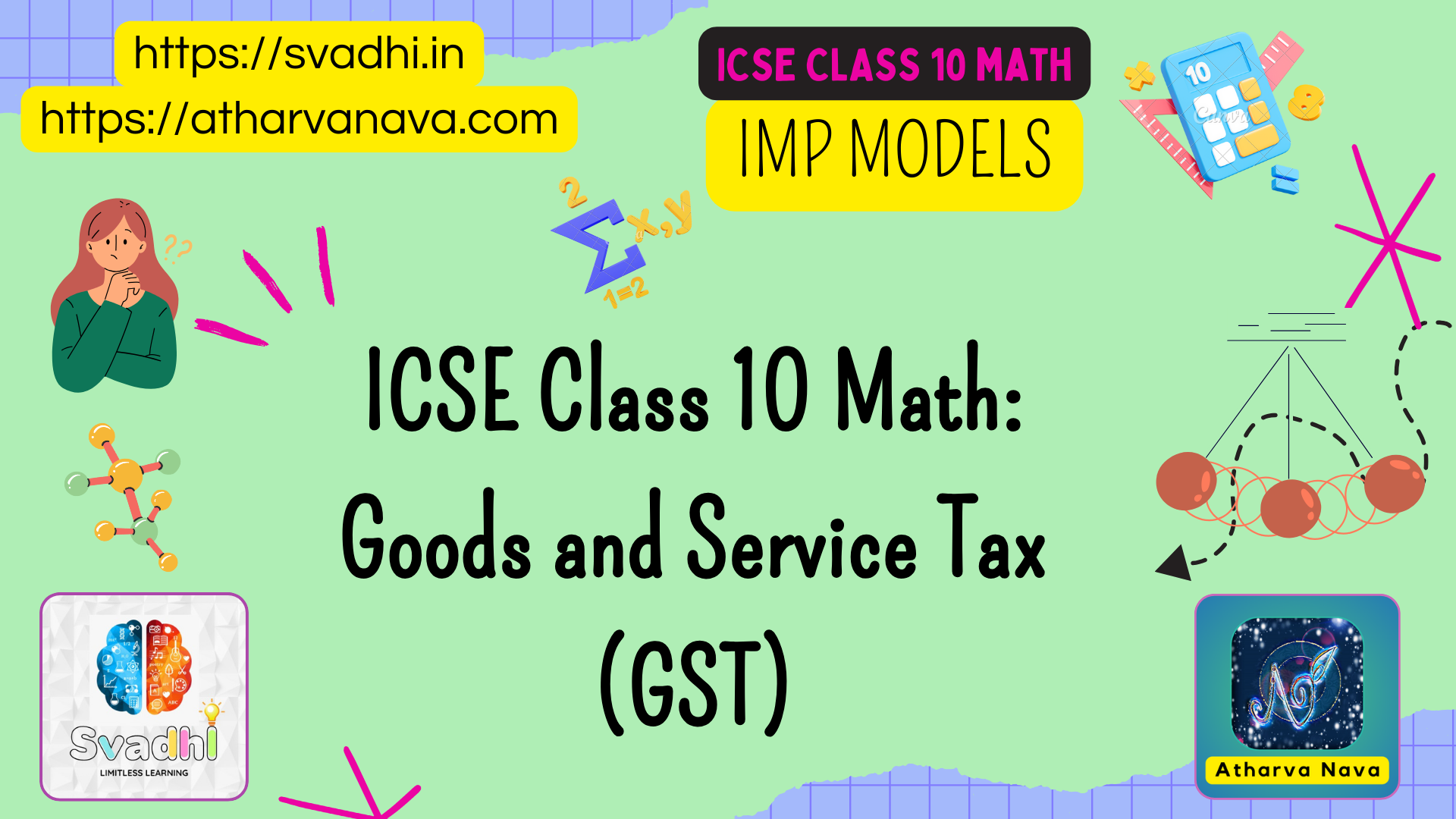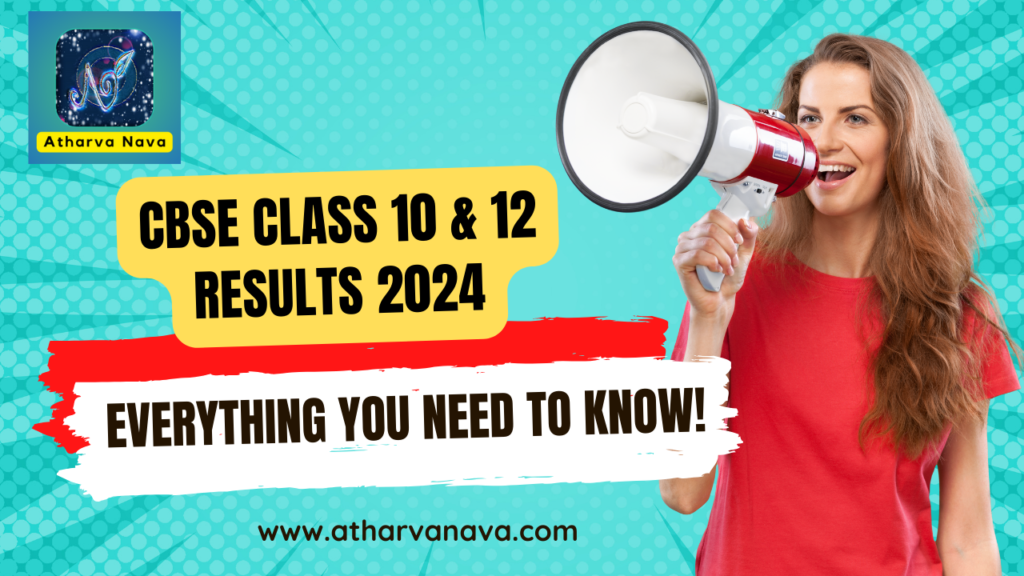Introduction
In the GST chapter for class 10 ICSE 2023, Goods and Service Tax is a taxation system introduced in India to replace multiple taxes with a single tax. GST is applied when you purchase goods or use services. It simplifies the tax system and in your class 10 chapter, you will learn how to calculate GST, understand tax rates, and analyze its impact on prices and the economy. Knowing about GST is not only helpful for exams but also for understanding the economic system.
What is GST?
GST, also known as Goods and Services Tax, is a unified tax system implemented in India to replace multiple indirect taxes. It is applicable when purchasing goods or utilizing services and aims to simplify the tax structure. GST is calculated based on the value added at each stage of production and distribution, with different tax rates for different types of items. Businesses can take advantage of Input Tax Credit to offset the taxes they have paid on their purchases. Understanding GST is crucial in the fields of taxation and economics.

Class 10 Goods and Service Tax Important Model Questions and Answers
Q1. Let P, Q, and R be three traders in different states. Trader A sells some goods to Trader B for ₹ 1,000. Trader B sells the same goods to Trader C for ₹ 1,500. If the rate of GST is 18%, then the tax liability of trader B is …………………….
Options
(a) ₹ 90
(b) ₹ 120
(c) ₹ 150
(d) ₹ 200
Ans. (a) ₹ 90
Explanation:
C.P. for trader B = ₹ 1,000
S.P for trader B = ₹ 1,500
Since the transaction is inter-state,
∴ Tax liability on B
= Output IGST – Input IGST
= 18% of ₹ 1,500 – 18% of ₹ 1,000
= ₹ 270 – ₹ 180
= ₹ 90.
Q2. Shashi buys goods worth ₹ 7,000 from a grocery store. Since she has a membership card, she gets a discount of 15% on ₹ 5,000. If the GST charged is 18%, then the total amount she has to pay for the goods is:
Options
(a) ₹ 4,362.50
(b) ₹ 6,363.50
(c) ₹ 6,306.25
(d) ₹ 7,375
Ans. (d) ₹ 7,375
Explanation:
Total discounted price
= ₹ [2,000 + (5,000 – 15% of 5,000)]
= ₹ [2,000 + 4,250]
= ₹ 6,250
∵ GST rate = 18%
∴ CGST =SGST = 9% of ₹ 6,250
= ₹ 562.50
∴ Total amount Shashi has to pay
= ₹ 6,250 +₹ 562.50 + ₹ 562.50
= ₹ 7,375.
Q3. A wholesaler buys a TV from the manufacturer for ₹ 25,000. He marks the price of the TV 20% above his cost price and sells it to a retailer at a 10% discount on the marked price. If the rate of GST is 8%, Find the:
(i) marked price.
(ii) retailer’s cost price inclusive of tax.
(iii) GST paid by the wholesaler.
Explanation:
Sol. Given, wholesaler’s C.P. of a T.V.
= ₹ 25,000
(i) Marked price of a T.V.
= ₹ 25,000 + 20% of ₹ 25,000
= ₹ 25,000 + ₹ 5,000
= ₹ 30,000. Ans.
(ii) Discount = 10% of ₹ 30,000
=30.000×10100×₹30,000=30.000×10010×₹30,000
Discount price
= ₹ 30,000 – ₹ 3,000
= ₹ 27,000
Tax for the wholesaler
= 8% of 27,000
= ₹ 2160
Retailer’s C.P. (Inclusive of all taxes)
= ₹ 27,000 + ₹ 2160
= ₹ 29,160. Ans.
(iii) Amount of GST to be paid by the wholesaler
= Tax on the value added by the wholesaler
= 8% of ₹ ( 27,000 – 25,000 )
=8100×2000=1008×2000
= ₹ 160. Ans
Q4. Shyam went to watch a movie. He wanted to purchase a movie ticket for ₹ 90. As the ticket for ₹ 90 was not available, he purchased a ticket for ₹ 140 for the upper class. How much extra GST did he pay for the ticket if the GST for a ticket below ₹ 100 is 18% and the GST for a ticket above ₹ 100 is 28%?
Explanation:
According to the question,
GST on ticket of ₹ 90 = 18% of 90
=18100×90=10018×90
= ₹ 16.20
GST on ticket of ₹ 140= 28% of 140
=28100×140=10028×140
= ₹ 39.20
Difference between both GST = 39.20 – 16.20
= ₹ 23.00
Q5. Goods/Services are sold from Agra (U.P.) to Kanpur (U.P.) for ₹20,000 and then from Kanpur to Jaipur (Rajasthan). If the rate of GST is 18% and the profit made at Kanpur is ₹5,000 find:
(a) The net GST payable by the dealer at Kanpur.
(b) The cost of goods/services at Jaipur.
Explanation:
When the product is sold from Agra to Kanpur (intra – state transaction) :
For dealer in Agra:
S.P = ₹ 20,000
CGST = 9% of ₹ 20,000 = ₹ 1,800
SGST = 9% of ₹ 20,000 = ₹ 1,800
When product is sold from Kanpur to Jaipur (inter-state transaction):
For the dealer in Kanpur:
Input tax credit = ₹ 1,800 + ₹ 1,800 = ₹ 3,600
C.P = ₹ 20,000 and Profit = ₹ 5,000
S.P = ₹ 20,000 + ₹ 5,000 = ₹ 25,000
IGST = 18% of 25,000 = ₹ 4,500
Net GST paid by the dealer at Kanpur
= Output GST – Input GST
= 4,500 – 3,600 = ₹ 900
The cost of goods/services at Jaipur
= S.P in Kanpur + IGST
= 25,000 + 18% of 25,000
= 25,000 + 4,500 = ₹ 29,500






















